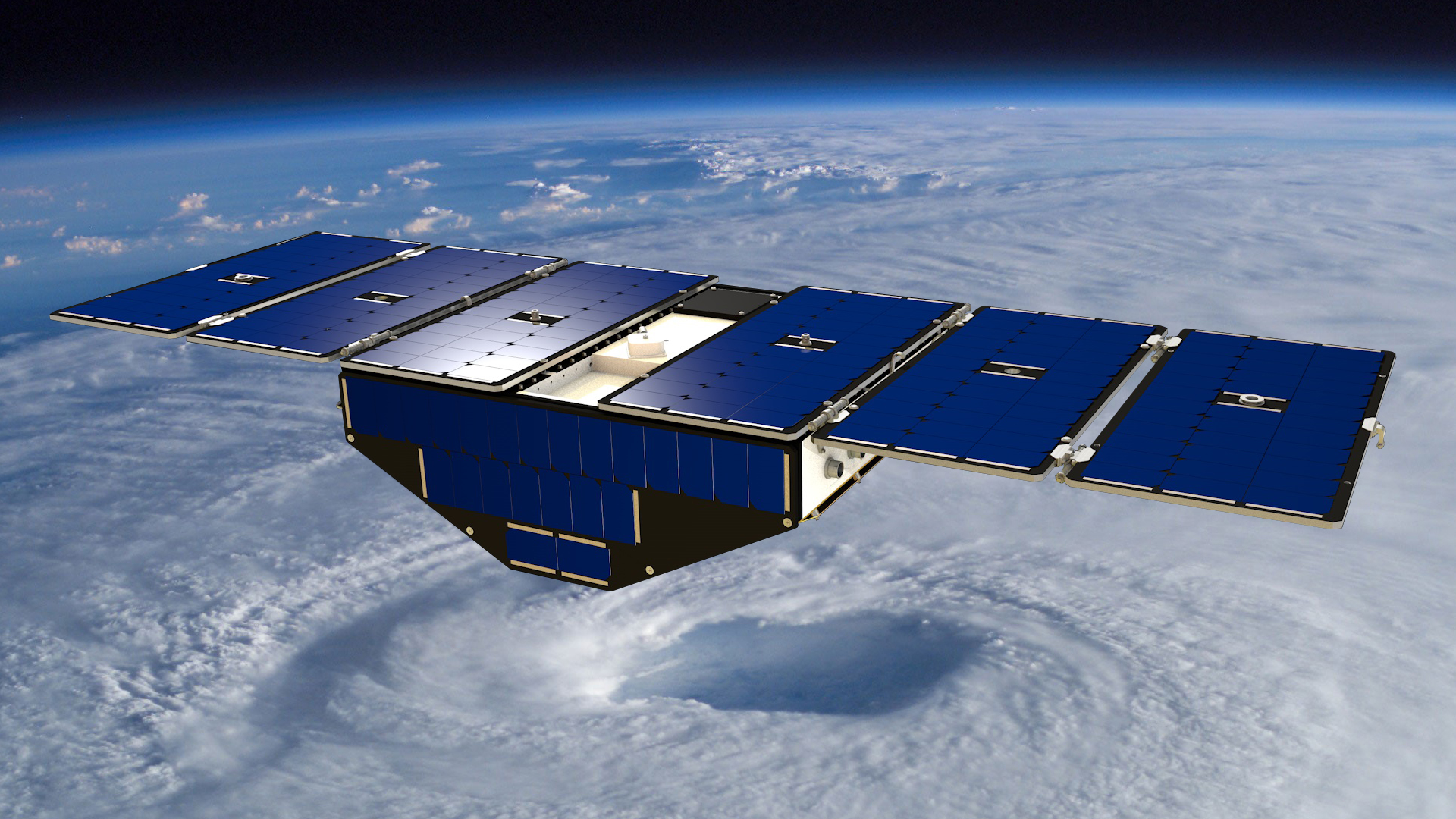NASA will hold a media briefing at 1 p.m. EST Thursday, Nov. 10, to discuss the upcoming Cyclone Global Navigation Satellite System (CYGNSS) mission, a constellation of eight microsatellites that will gather never-before-seen details on the formation and intensity of tropical cyclones and hurricanes.
The briefing will be held in the James E. Webb Auditorium at NASA Headquarters, located at 300 E St. SW in Washington, and will air live on NASA Television and stream on the agency’s website.
The briefing participants are:
- Christine Bonniksen, CYGNSS program executive with the Science Mission Directorate’s Earth Science Division at NASA Headquarters
- John Scherrer, CYGNSS project manager at the Southwest Research Institute in San Antonio
- Chris Ruf, CYGNSS principal investigator at the Department of Climate and Space Sciences and Engineering, University of Michigan, Ann Arbor
- Mary Morris, doctoral student in the Department of Climate and Space Sciences and Engineering
Media may ask questions from participating agency centers or by telephone. To participate by phone, reporters must send an email providing their name, affiliation and telephone number to Dwayne Brown at dwayne.c.brown@nasa.gov by noon Nov. 10. Media and the public also may ask questions during the briefing on Twitter using the hashtag #askNASA.
CYGNSS, targeted for a Dec. 12 launch from Cape Canaveral Air Force Station in Florida, is the first mission competitively selected by NASA’s Earth Venture program. This program focuses on low-cost, science-driven missions to enhance our understanding of the current state of Earth and its complex, dynamic system and enable continual improvement in the prediction of future changes.
The Space Physics Research Laboratory at the University of Michigan College of Engineering in Ann Arbor leads overall mission execution, and its Climate and Space Sciences and Engineering department leads the science investigation. The Earth Science Division of NASA’s Science Mission Directorate oversees the mission.
For NASA TV streaming video, downlink and updated scheduling information, visit:
https://www.nasa.gov/nasatv
For more information about NASA’s Earth science activities, visit:
https://www.nasa.gov/earth
For more information about NASA’s CYGNSS mission, visit:
https://www.nasa.gov/cygnss
-end-
Sean Potter
Headquarters, Washington
202-358-1536
sean.potter@nasa.gov
E.J. Olsen
University of Michigan, Ann Arbor, Mich.
734-764-5235
ejolsen@umich.edu


























